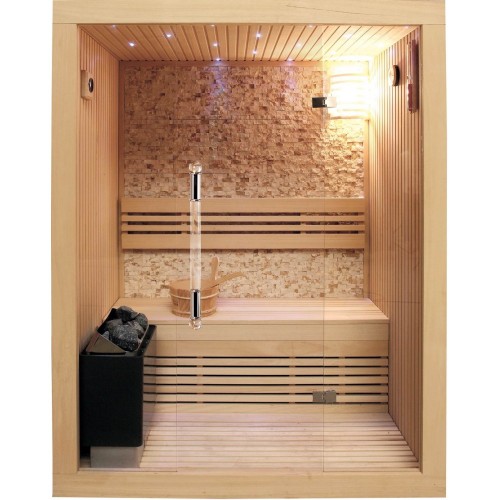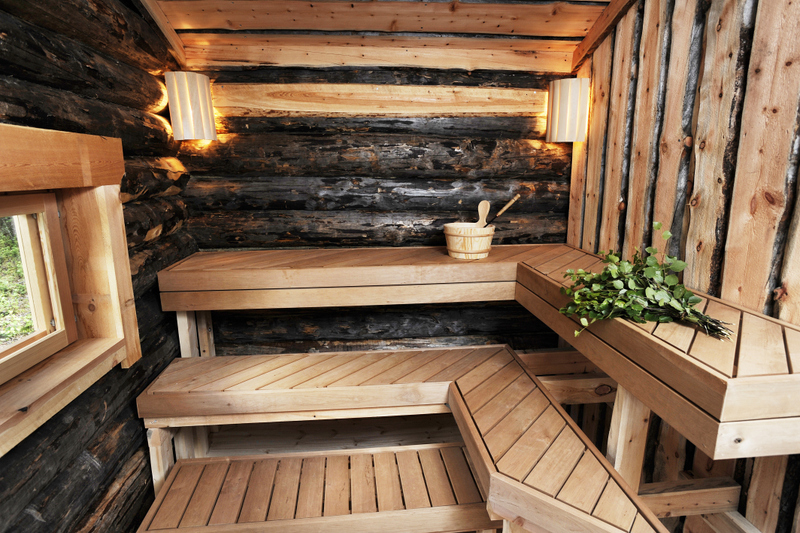The Best Guide To Traditional Sauna
The Best Guide To Traditional Sauna
Blog Article
Traditional Sauna Can Be Fun For Anyone
Table of ContentsOur Traditional Sauna StatementsHow Traditional Sauna can Save You Time, Stress, and Money.Traditional Sauna for BeginnersSome Known Details About Traditional Sauna Traditional Sauna - Truths
Many of the weight shed in a sauna is water loss and is re-gained upon rehydrating. Without a doubt sauna can be an important component of a healthy and balanced weight loss program. To check out the distinctions between traditional and IR saunas, I will certainly separate these into verifiable, academic, and produced distinctions.Hence, the hottest factor in the saunawhich is at the ceiling directly over the sauna heateris commonly in between 185 and 190 F. Claims that a conventional sauna exceeds 200 F is merely not true and not suitable for electrical saunas offered in the US. The temperature for a far-infrared sauna is usually established between 120 and 140 F; nevertheless, unlike the typical sauna, the objective in and IR area is not to accomplish a high temperature level.
As a result of this, the temperature distinction is almost pointless, because extreme sweating results in both sauna kinds, but the technique of warming the body is different. In an IR sauna the bather will certainly feel hot and will certainly sweat profusely, however at much reduced temperatures (Traditional Sauna). Therefore, if the goal is to spend longer periods of time in the sauna, the IR sauna is a great selection
When a traditional sauna has been effectively heated, the sauna walls are cozy, the air temperature level has attained set temperature and the rocks are incredibly warmed. As a fascinating side note, the heated walls and the rocks are sending out far-infrared heat, integrated with the warmed air, to develop an "enveloping warm".
The Best Guide To Traditional Sauna

When the high temperature level is achieved, the elements cycle on and off to keep the heat. Most traditional sauna individuals delight in pouring water over the rocks to create vapor to increase sauna humidity degrees. The advantages of pouring water over the rocks include: making the room much more comfortable, moistening the nasal flows, and permitting the usage of aromatherapy by mixing important oils with the water.

When the power gets in the body, it creates the anchor body temperature level to enhance and inevitably leads to perspiration. In you could try these out an infrared sauna it is very important for the emitters/heaters to remain on practically regularly. Since there is no mass of rocks to retain warm, the sauna will certainly cool if the emitters turned off.
As discussed above, the sauna bather in an infrared room wishes to place himself before operating emitters to obtain optimal gain from the warmth. The heating time for both rooms can be very different, depending on how the rooms are used. For a typical sauna, a bather needs to allow 30-40 mins for the area to accomplish a wanted temperature and to appropriately pre-heat the rocks.
Traditional Sauna - Questions
A well constructed sauna will normally attain a temperature level of 150-160 F in about 30-40 mins. For hotter temperature levels, the room might need to heat for a longer period. When the space attains established temperature level, the heating unit will certainly cycle on and off, normally running about 50% of the time. The shielded walls and the warmed rocks will certainly maintain the area warm and at secure temperature levels.

Traditional saunas have a tendency to be larger (for this reason use more electrical power) than infrared saunas, although typical saunas are definitely available in one and two individual dimensions. For a two-person conventional sauna, 5x6 or 5x7 dimension is most popular. The top bench can conveniently seat 2 or 3 individuals browse around this site and is additionally long enough to exist down during the sauna session.
The Single Strategy To Use For Traditional Sauna
The average price per kWH of power in the U.S. is around $0.11, so a 4.5 kW heater will cost about $.50 to run for one hour, if the heating unit runs constantly for one hour. Commonly a sauna heater will run for 75% of the first hour and 50% of succeeding hours on given that the elements cycle once the set temperature level is achieved.

There is a hardly ever talked about difference in the social experience between the 2 rooms. While our society has shed a few of the social benefit of the typical sauna experience, it can be extremely socially satisfying (Traditional Sauna). From family time in the sauna, to heart-felt conversations with better halves, to sauna partiesthe traditional sauna experience can bring about intimate interacting socially
Traditional Sauna for Dummies
Many greater end infrared rooms consist of colored light therapy, noise systems and full-glass fronts.
Report this page